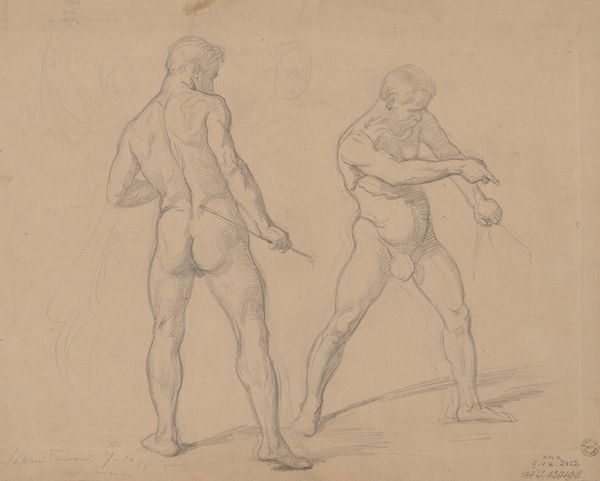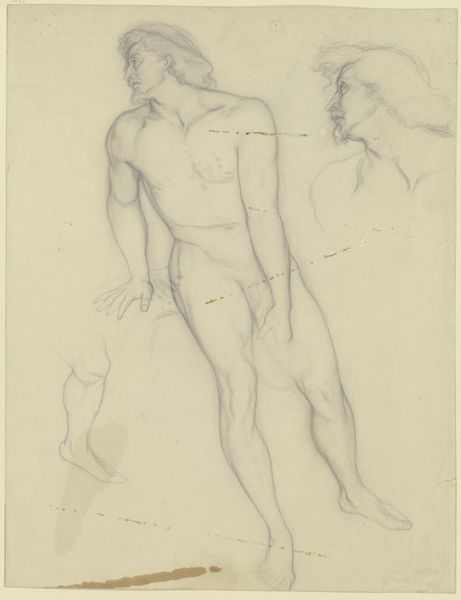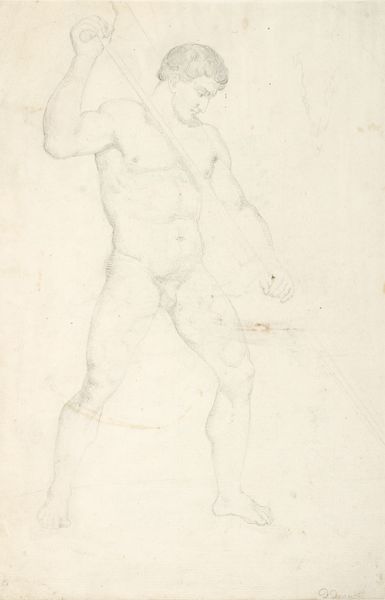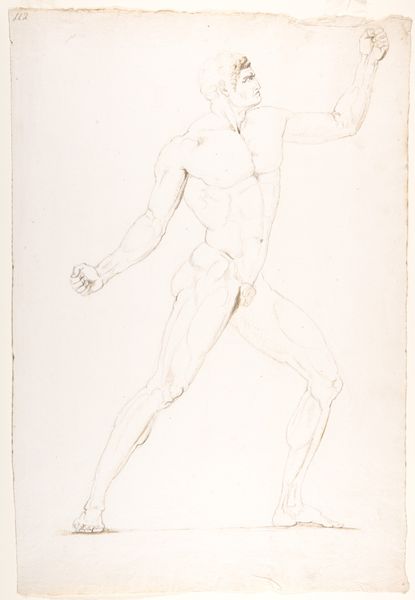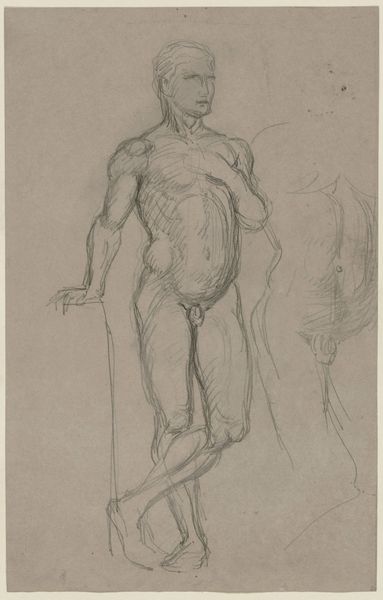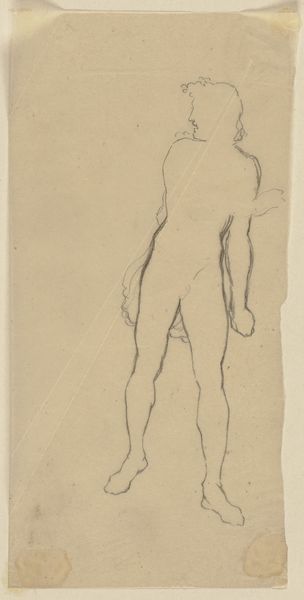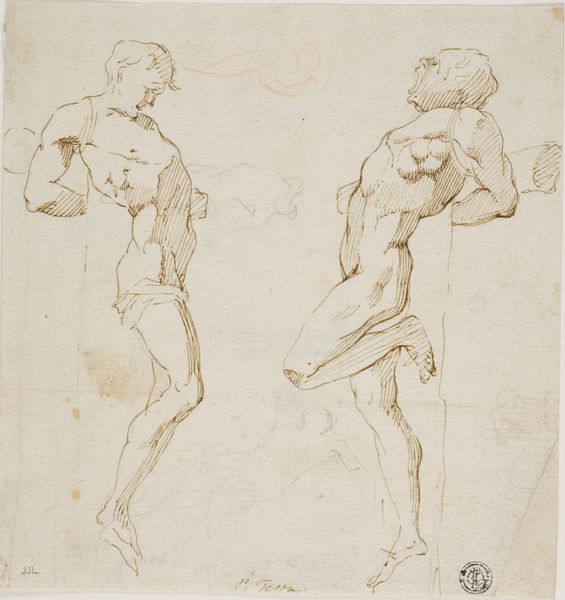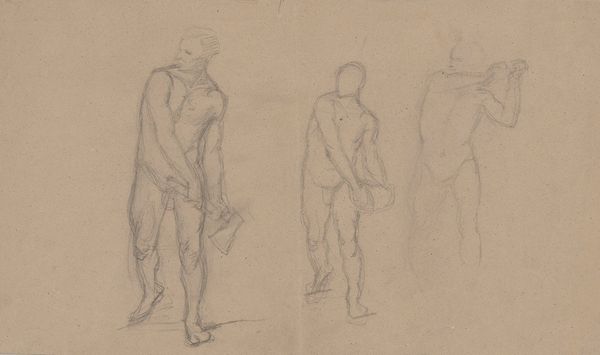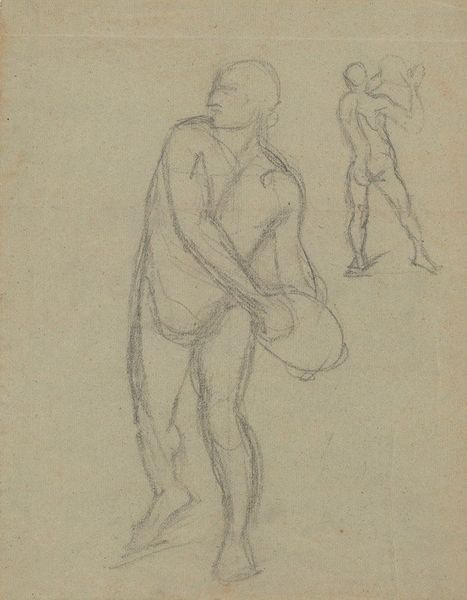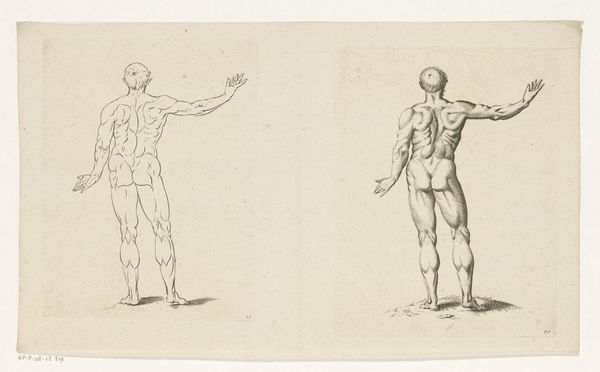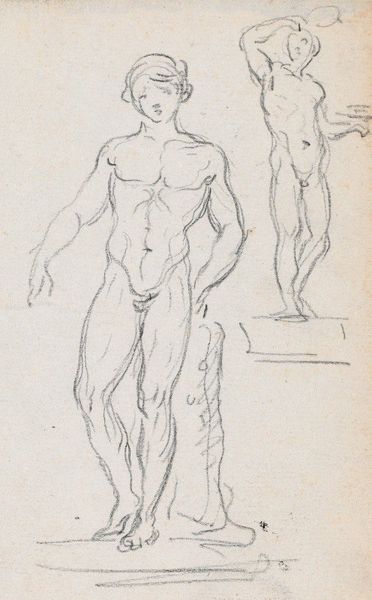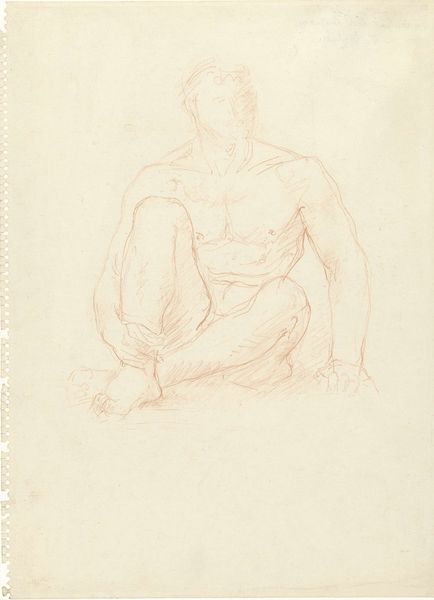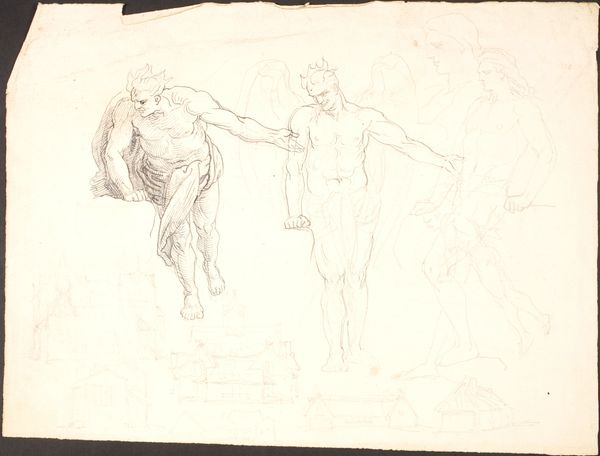
drawing, pencil
#
portrait
#
drawing
#
figuration
#
pencil
#
academic-art
Dimensions: 199 mm (height) x 158 mm (width) (bladmaal)
Curator: Here we have “Two Nude Male Studies” by C.A. Lorentzen, dating from 1746 to 1828. It’s currently held here at the SMK, the National Gallery of Denmark. It’s a drawing rendered in pencil. Editor: Immediately, I'm struck by how ghostly these figures appear, as if they are emerging from the very fabric of the paper. Almost tentative, and raw, unfinished maybe. There is something delicate about their being represented like this. Curator: That's interesting because these sorts of studies would have been pivotal in the academic art tradition of the period. Training involved a great deal of repetition and adherence to established artistic precepts. It was all part of mastering figuration. Consider the accessibility of the medium. A pencil allows an artist to lay down initial outlines with the prospect of being able to alter, add to, and rework a drawing without needing recourse to more costly tools, paints or canvas. Editor: Right, and that makes me wonder about the actual models, not as ideal figures, but ordinary people, presumably paid for posing, and all the inherent power dynamics involved. Were these studies ever meant for public view? Or were they part of a larger pedagogical approach? Curator: They absolutely served pedagogical functions; teaching studios thrived during this period. The repetitive rendering of form built into a type of standardized language meant to elevate the canon of representation. How an artist, and how their workshop, interpreted the body of the individual. Editor: Still, the slight imperfections and variations that one picks out suggests an intimacy with the human form, the models as humans and as people— not just statues of Gods, or whatever—even if that wasn't Lorentzen’s initial intention. Like he allowed himself to register little details despite that canon. I like those moments. Curator: I find myself thinking about what role that played when Lorentzen returned to similar material, or motifs, later. How one translates an initial study of bodies like these when they reemerge at another stage in a painting or in a fresco or print. Editor: The residue from the initial studies perhaps. All the unseen work that eventually materializes through the final rendering. And it makes you aware of all the human presence embedded there within.
Comments
No comments
Be the first to comment and join the conversation on the ultimate creative platform.
